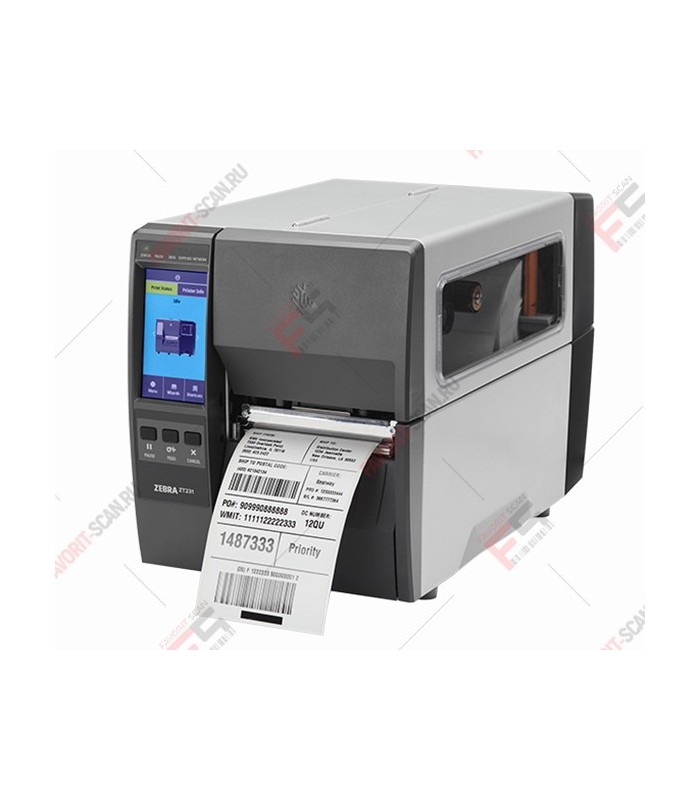How to Choose the Right Zebra Printer for Your Business
Choosing the right Zebra printer for your business can make a significant difference in how smoothly your daily operations run. Whether you’re in manufacturing, retail, healthcare, or logistics, the right printer ensures accurate and fast printing, improves workflow, and enhances overall productivity. With so many models available, it can be challenging to determine which one best suits your needs. This blog will guide you through the critical factors to consider when selecting the perfect Zebra printer for your business.
Understand Your Business’s Printing Needs
Before jumping into the details of various Zebra printers, it’s essential to first understand your business’s specific printing requirements. Ask yourself: how often do you print, what type of labels or materials do you need, and how fast do you need your prints? For example, if your business requires heavy-duty printing for labels or barcodes that need to withstand harsh environments, you might need an industrial-grade Zebra printer. On the other hand, if you only print labels occasionally, a desktop model would suffice.
Zebra offers a wide range of printers, from small and portable models to larger industrial versions, each designed to meet different needs. Some printers specialize in high-speed printing, while others are built to handle tougher materials. By understanding the volume and type of printing required, you can narrow down your choices and avoid paying for unnecessary features.
Note – For reliable Zebra PrinterLabels and Labelings, explore industry-leading solutions that enhance efficiency and precision in your business operations. Contact the experts today to find the perfect match for your specific needs and ensure seamless printing performance.
Consider the Environment Where the Printer Will Be Used
The location where the Zebra printer will be used plays a big role in determining the type of printer that would be best for your business. If your printer will be used in a clean office or retail setting, a smaller desktop model might be all you need. These are compact, quiet, and typically very easy to use. However, if your printer will be placed in a more rugged environment, such as a factory floor or warehouse, you may need a more durable, industrial-grade Zebra printer.
Zebra’s industrial printers are designed to withstand dust, temperature changes, and heavy-duty usage. They come with features like metal frames and longer-lasting components to ensure they can perform well under challenging conditions. So, think about whether your environment is harsh or gentle, and choose a printer accordingly. Not all Zebra printers are built for rough use, and using a lighter model in the wrong setting can lead to unnecessary wear and tear.

Determine the Types of Labels and Media You Will Be Printing
Zebra printers are highly versatile and can print on a wide variety of materials, but it’s important to determine what kind of media you will primarily be using. Do you need your Zebra printer to print shipping labels, barcodes, wristbands, or receipts? Some Zebra printers are optimized for specific materials, while others offer more flexibility.
For example, healthcare facilities might need printers capable of producing wristbands and small labels for patient identification. On the other hand, a retail store may require printers that can produce shipping labels, price tags, and barcodes. Understanding the type of media you’ll be working with ensures you select a model that is optimized for your needs. Additionally, check if you require features like dual media support or color printing, as these can help you choose the right model.
Print Speed and Volume: What’s Right for Your Workflow?
Print speed is another crucial factor to consider. Zebra printers vary in speed, so it’s important to match the printer’s speed with your workflow. For example, a fast-paced warehouse or distribution center may require a Zebra printer that can produce hundreds of labels in just a few minutes. In such cases, opting for a high-speed industrial printer would be a wise choice.
If you are in an environment where speed is less of a priority, and quality or precision is more critical, then a slower, high-resolution model might be better. Additionally, you should consider how often you need to print. For businesses that print large volumes daily, investing in a higher-end model capable of handling heavy workloads will save you time and increase efficiency. Choosing a printer that matches your workflow ensures you won’t face unnecessary delays or bottlenecks in your printing process.
Connectivity Options: Ensure Seamless Integration
In today’s digital age, the connectivity options available on your Zebra printer are just as important as the printing features themselves. Different Zebra printers come with various connectivity options such as USB, Ethernet, Wi-Fi, or Bluetooth. Choosing a printer with the right connection type ensures that it integrates seamlessly with your existing systems and networks.
If you need the flexibility of mobile or remote printing, then wireless connectivity will be crucial for your setup. On the other hand, if the printer will remain in one spot and you only need a stable connection, then an Ethernet or USB connection might be sufficient. Considering your business’s network setup and choosing a Zebra printer with compatible connectivity options is essential for ensuring smooth, efficient printing with minimal interruptions.
Budget and Long-Term Costs: Balance Quality and Affordability
While it’s tempting to go for the least expensive option, it’s crucial to look beyond the initial price tag when choosing a Zebra printer. The long-term costs associated with printer maintenance, replacement parts, and consumables like labels and ribbons can quickly add up. It’s essential to balance upfront costs with the overall value the printer will bring to your business.
High-end Zebra printers may come with a bigger price tag, but they are often more durable and designed to handle heavy workloads, meaning they could last longer and require less maintenance. On the other hand, a smaller, more affordable desktop model might be perfect for a business with lighter printing needs. The key is to think about the total cost of ownership, including ongoing maintenance, supplies, and potential downtime. Choosing a printer that fits both your budget and your long-term needs will save you money in the long run.
Support and Warranty: Don’t Overlook After-Sales Services
One often overlooked aspect of purchasing a Zebra printer is the availability of support and warranty services. Zebra is known for its customer service and extensive warranty options, but different models come with varying levels of coverage. Choosing a printer that includes a comprehensive warranty can give you peace of mind and save you money on potential repairs or replacements in the future.
Additionally, having access to reliable customer support is essential. Whether it’s troubleshooting common issues or providing replacement parts, good customer support can keep your operations running smoothly. Make sure to choose a Zebra printer model that comes with the right level of service and support for your business’s needs. This will ensure that, in the case of any issues, you’re covered and can minimize downtime.
Conclusion: Choose Wisely for Long-Term Success
Selecting the right Zebra printer for your business isn’t just about picking the first model you see. It’s about considering multiple factors such as your printing volume, the environment, media type, print speed, connectivity, and budget. With these factors in mind, you’ll be better equipped to make a smart decision that benefits your business in the long term. Zebra offers a wide variety of printers designed to meet the needs of different industries and environments, so no matter what your business requires, there’s a Zebra printer that’s right for you.
By taking the time to assess your needs and choosing the right model, you’ll be investing in a solution that enhances your workflow, saves time, and increases overall efficiency in your business operations.
For more insightful articles related to this topic, feel free to visit newstips.co.uk






